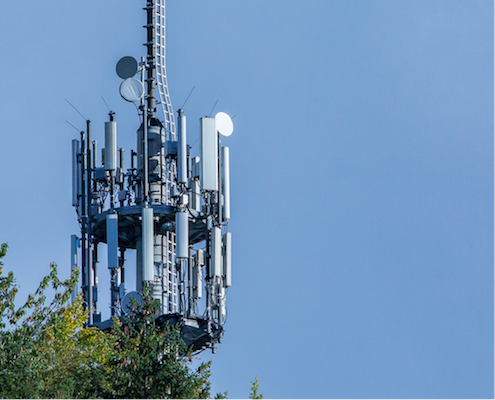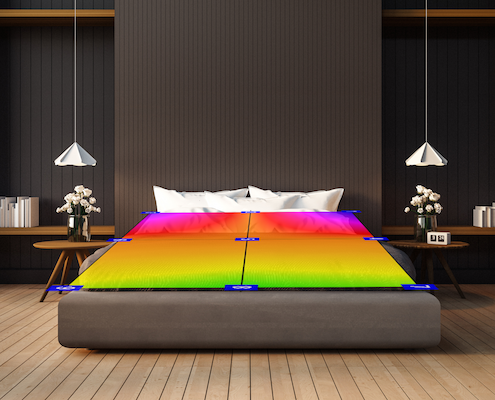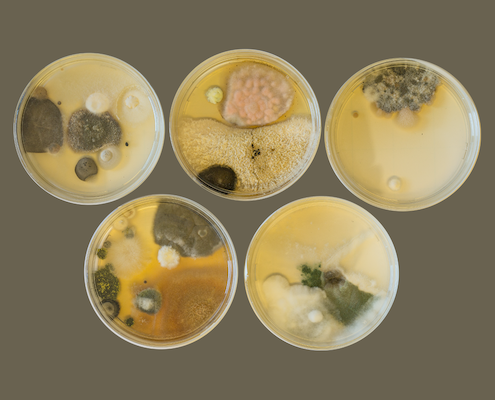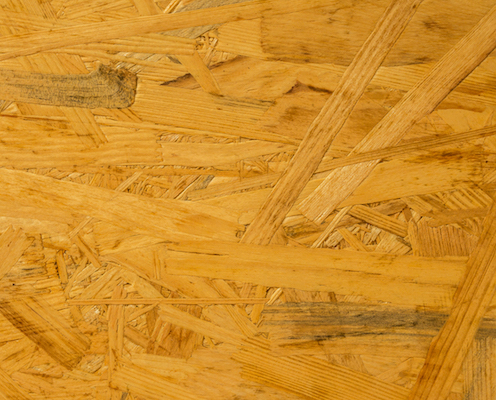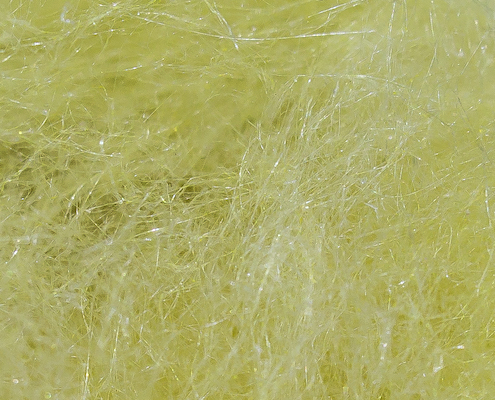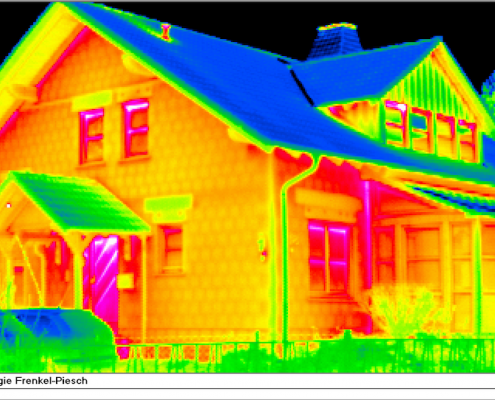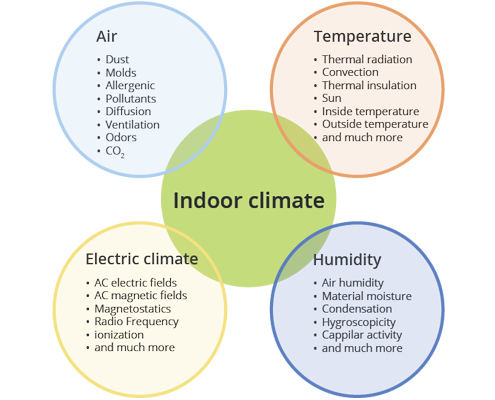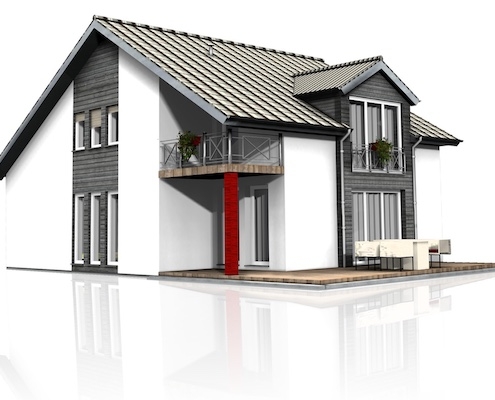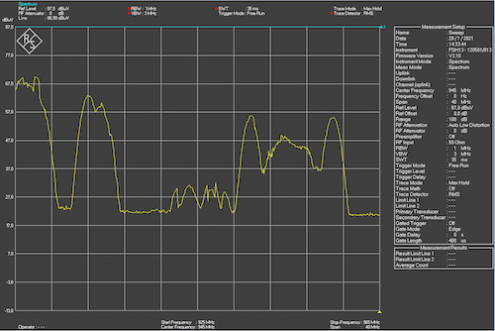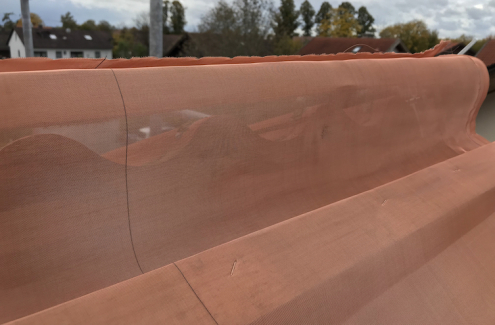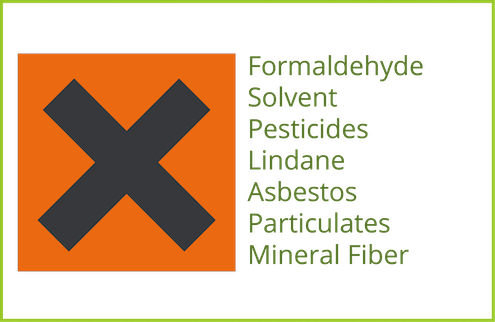Mobile radio & WLAN in living spaces
Electromagnetic fields (EMF-HF), which are generated e.g. by the use of mobile radio or WLAN, have been classified by the WHO (IRAC) as “possibly carcinogenic” in class 2b. The problem here is not only the so-called carrier frequency but also the pulsing of the data packets’ transmission.
Technical fields / waves – electric smog
Many sleeping places have high levels of technical fields. Technical fields (electrostress / electric smog) can have an influence on free radicals and oxidative cell stress in the body. The number of electrosensitive people is now estimated to be up to 9% of the population.
Health risk due to mold in living spaces
A mold infestation in living spaces can cause health issues such as respiratory diseases, asthma, allergies, headaches, irritation of the skin, nose or eyes. A systemic fungal infection is possible for immunocompromised people.
Formaldehyde
Formaldehyde has been classified by the IARC (International Agency for Research on Cancer) in Group 1 as carcinogenic and is present in many building materials or furnishings as well as in textiles. Due to its toxicity, legally defined concentrations apply in rooms.
Radon from the soil
Radon is a naturally occurring radioactive noble gas, it is invisible, odourless and tasteless. Radon is the second highest risk factor for lung cancer after smoking. The radon gas concentration can vary greatly in existing buildings with leaks in building components in contact with the ground.
Mineral fibre insulating materials
Artificial mineral fibres (PMF) consist mostly of glass, rock and mineral wool and binders. KMF fibres produced before 1995 can be carcinogenic. A health risk from KMF fibres was proven as early as 1972. Before renovation work, the KMF fibre should be tested for harmlessness.
Building thermography
Thermography is an imaging method that makes temperature distributions visible. With the help of an infrared thermal imaging camera, the temperature differences on the surface of a building component, such as a wall surface, are visualised as colour gradients.
Healthy indoor climate
Indoor climate is an essential component of comfortable, healthy living and supports the recovery phase during a night’s sleep. Healthy and restful sleep is essential for cell regeneration, which is important for the formation of an intact immune system.
Healthy building and renovation
Energy-efficient construction and renovation places high demands on the building envelope and its airtightness. However, airtight construction is often the root cause of accumulation of pollutants or humidity in indoor spaces.
Mobile radio spectrum analysis
Depending on the task of examining a living or sleeping area, it may be necessary to collect detailed information on high-frequency immissions, e.g. which radio service is involved, what the signal strength is and what permanent minimum and maximum HF immission can be expected at the measuring point.
Mobile radio shielding
High-frequency emissions (HF emissions) are constantly increasing in cities and rural areas. These are often above the international recommendations for living rooms or bedrooms, meaning that shielding is required to reduce HF immissions.
Pollutants
We spend most of our lives indoors. Due to the airtight construction of new buildings or building renovation, the risk of mold growth and pollutant contamination increases. There are no fixed limit values for living spaces so that orientation values of the Association for Indoor Pollutants …








